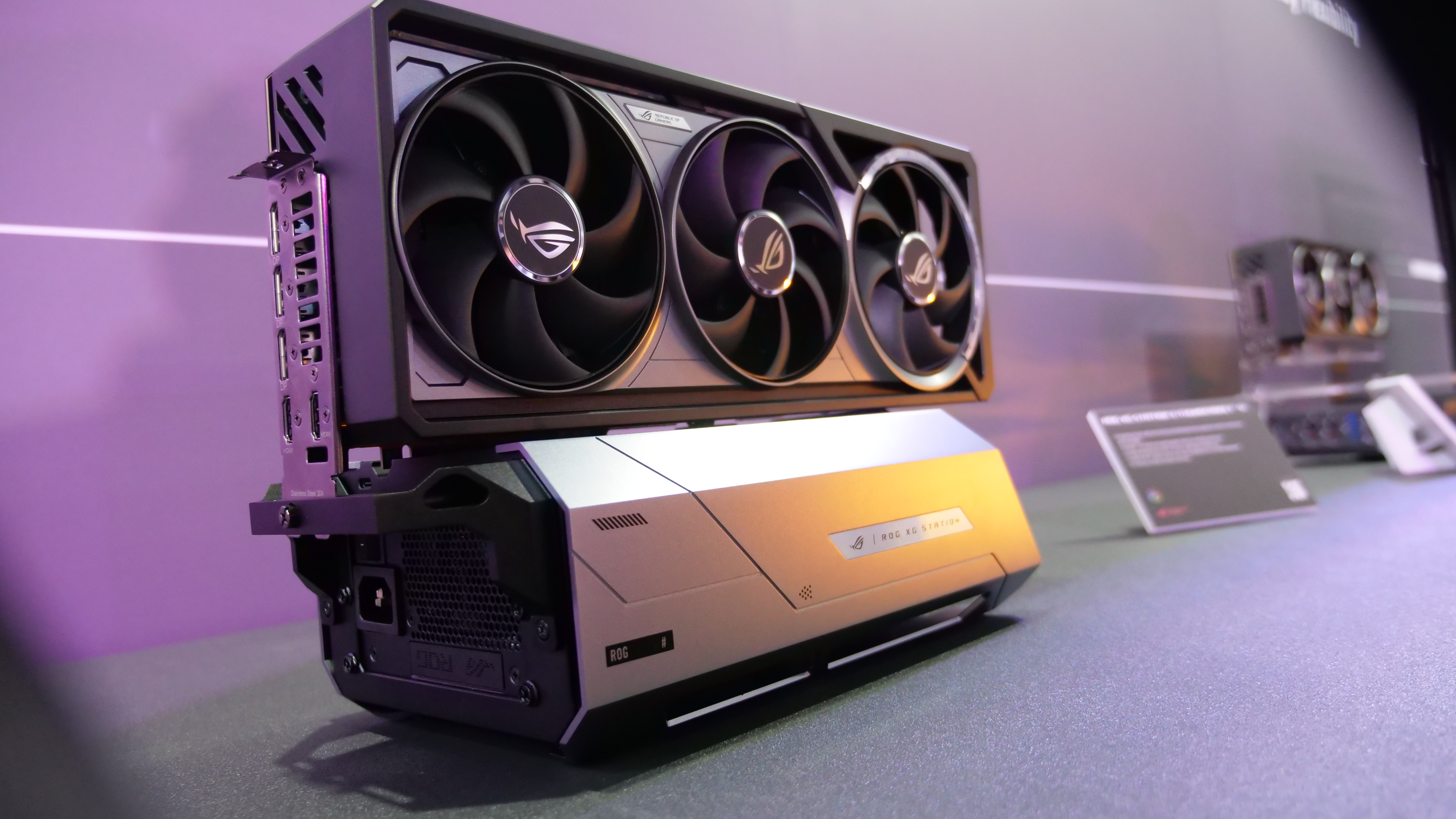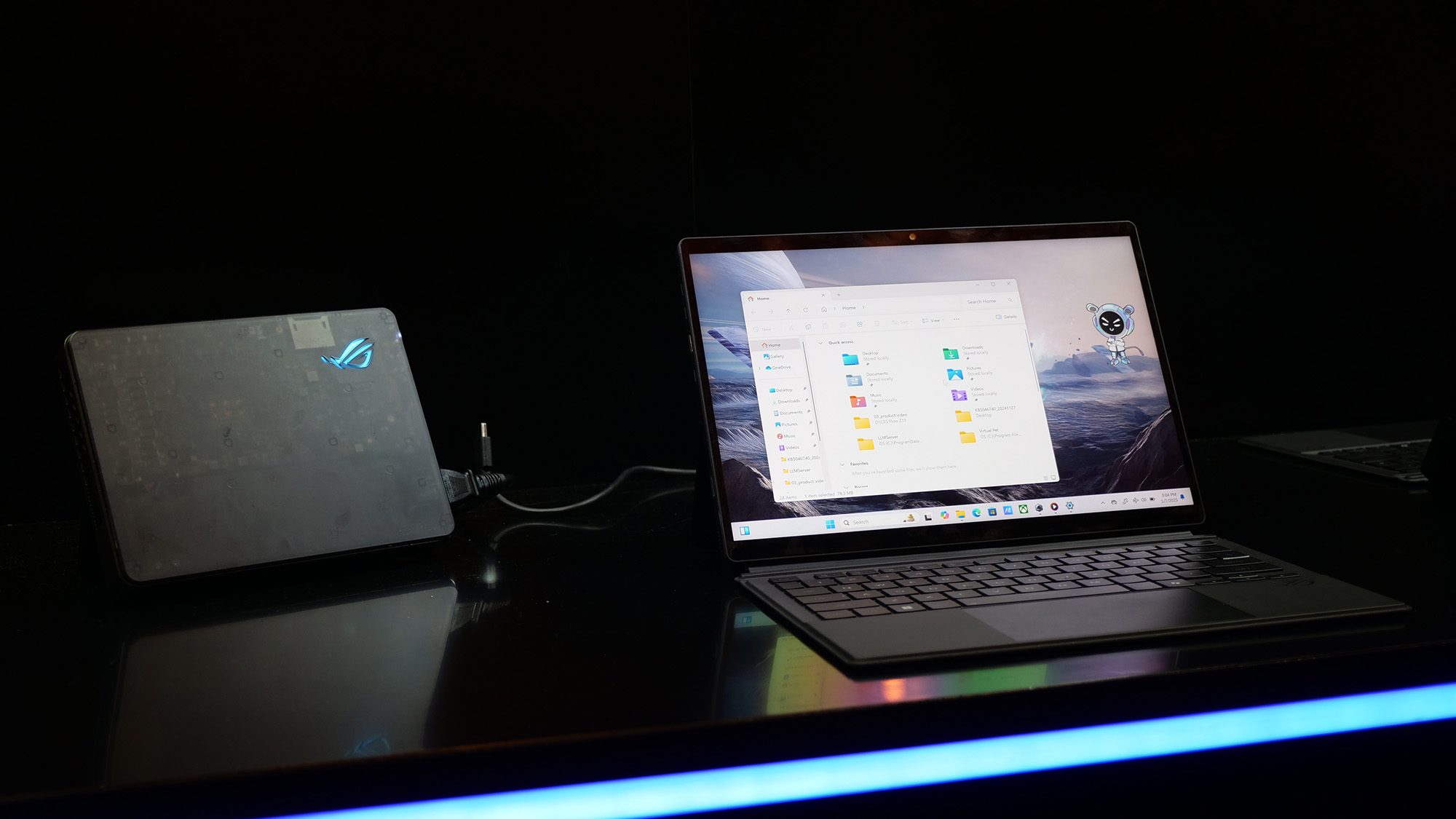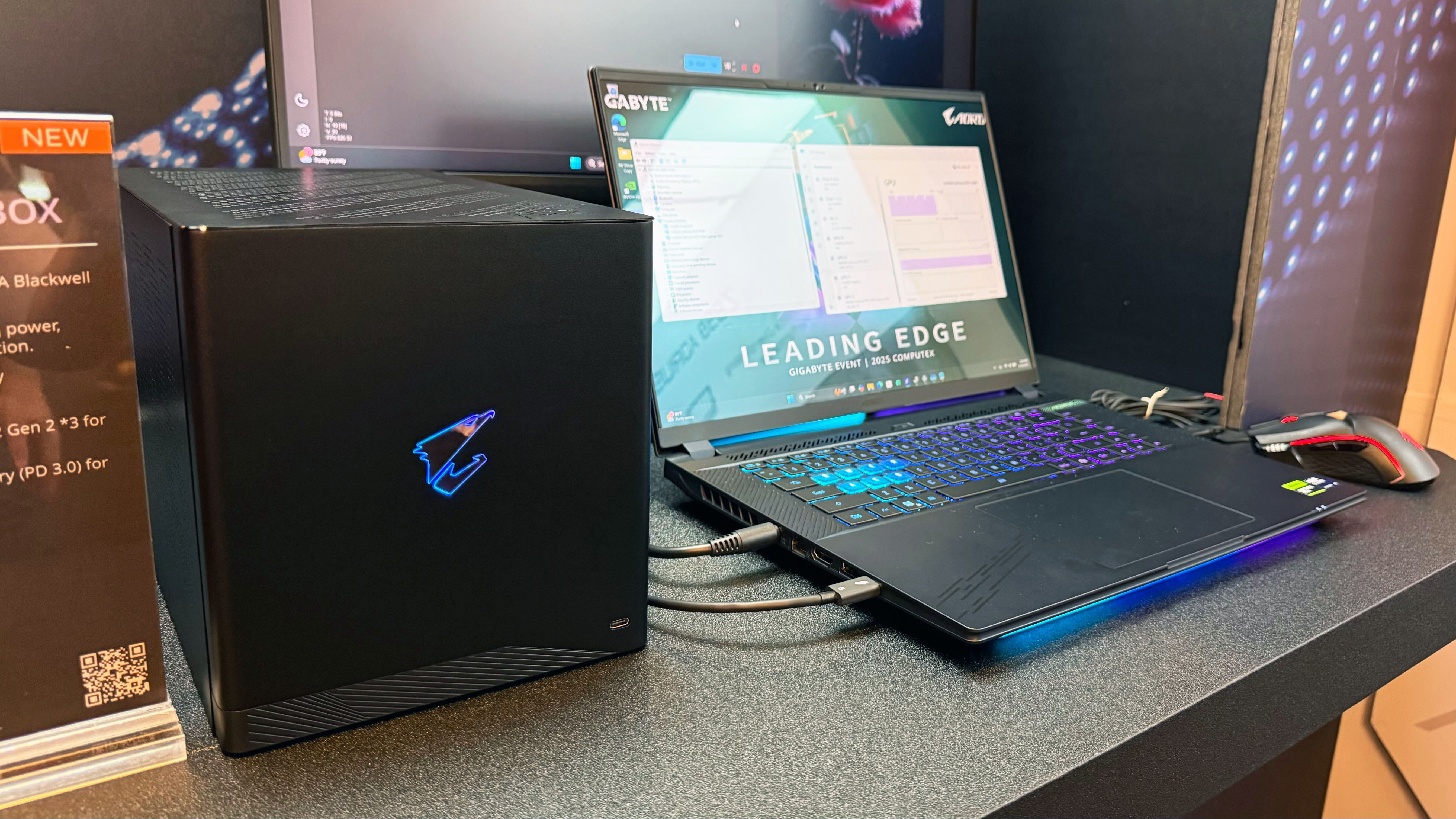Is 2025 the Year of the eGPU revival?
From Asus to Gigabyte, we've seen more eGPUs at Computex than we have in years

If you asked me on January 1, 2025, to guess how many eGPUs we'd see this year, I'd have probably said "none" because eGPUs seemed to be a thing of the past.
We still have an old Razer Core X kicking around the Laptop Mag office, and we still have a list of the best eGPUs, but those haven't been updated in quite some time, as there just hasn't been anything new in the eGPU space.
And now here we are, just under six months into the year, and we've seen three eGPUs from major manufacturers.
Which begs the question: Is 2025 the year of the eGPU revival?
The eGPUs of 2025 so far

At CES this year, Asus showed off the ROG XG Mobile eGPU, an updated version of the company's portable eGPU with an RTX 5090 laptop GPU.
At Computex last week, the company followed up with the ROG XG Station 3, which is designed to house a full desktop GPU. However, like many eGPUs of old, the XG Station 3 requires you to bring your own GPU.
Also at Computex was Gigabyte's updated eGPU, the Aorus RTX 5090 AI Box. This eGPU comes with an all-in-one WaterForce liquid cooling system to help alleviate heat-induced throttling caused by the powerful Nvidia RTX 5090 graphics card.
Sign up to receive The Snapshot, a free special dispatch from Laptop Mag, in your inbox.
Leveraging the new Thunderbolt 5 connectivity protocol, these eGPUs are more powerful than ever. With Thunderbolt 5, you'll suffer far less performance loss than you did with Thunderbolt 4, USB 4, or Thunderbolt 3. To make it work, you need a laptop with Thunderbolt 5 capabilities.
Have we finally figured out the best use of the eGPU?

There were many reasons why eGPUs didn't change the gaming laptop market for most.
While dedicated eGPU enthusiasts exist, the technology just wasn't quite at the right inflection point when eGPUs first hit the market in 2013 with the advent of Thunderbolt 2. After all, why pay for a laptop, an eGPU enclosure, and a GPU when you wouldn't get the full power of a desktop-class GPU on your laptop?
While things improved with the advent of Thunderbolt 3 and Thunderbolt 4 (and USB 4 on the AMD side), the transfer bandwidth just wasn't enough to make eGPUs worthwhile for most people. It was cheaper and often more convenient to just buy a gaming laptop rather than try to make your ultra-portable laptop into a gaming rig with an external GPU.
With Thunderbolt 5's 80 Gbps bandwidth, you get double the performance of a Thunderbolt 4 connection.
Most eGPUs are aimed at gamers, but they can also be useful for content creators who need extra GPU power at home and longer battery life when on the road.
Even still, I'm not sure we've hit the critical use case for eGPUs yet.
But as someone who would absolutely connect an ultra-light laptop like the Asus Zenbook A14 to the ROG XG Station 3 just for the hell of it, we may have finally have tech capable of making the eGPU worth it this year.
More from Laptop Mag
- Gamers should be ditching Windows for SteamOS — here's why
- Nvidia’s 120W APU leak could mark the beginning of the end for laptop GPUs
- The Razer Blade 14 is now slimmer than ever

A former lab gremlin for Tom's Guide, Laptop Mag, Tom's Hardware, and TechRadar; Madeline has escaped the labs to join Laptop Mag as a Staff Writer. With over a decade of experience writing about tech and gaming, she may actually know a thing or two. Sometimes. When she isn't writing about the latest laptops and AI software, Madeline likes to throw herself into the ocean as a PADI scuba diving instructor and underwater photography enthusiast.
You must confirm your public display name before commenting
Please logout and then login again, you will then be prompted to enter your display name.
